Steelcase Solo Standing Desk Review
Like most reviews sites, our editorial staff and laboratory testing expenses are partially offset by earning small commissions (at no cost to you) when you purchase something through those links. Learn More

Overview
| Review Summary |
($3.5B+) Steelcase is the biggest brand in commercial office furniture but this new Solo standing desk is targeting the home office user, and the jury is still out on whether the company can eventually learn how to sell to and support the residential customer. The Solo desk aims to hit a $600-$700 price point with stripped-down basics and limited size and color offerings, but a much easier assembly process than their other desk lines that they’ve repositioned and repriced for the home office. Based on a new Linak base made in a new Thai factory, it circumvents the higher cost of American-made or Danish-made Linak bases while avoiding Chinese tariffs and quality issues. The desktop, however, is very basic, not of the highest quality, and at 55 dB it may be one of the noisiest electric frames out there. |
|---|---|
| MSRP / List Price | $679 |
| Street Price |
24″x48″ $679 |
| Shipping |
Ground shipping in the Lower 48 is included in the price but it takes 15 business days to ship from Steelcase. |
| Warranty |
There is no warranty description for the Solo desk anywhere on the Steelcase store website or in the owner’s manual. However, based on other product lines a good guess would be 12 years on the desktop and 5 years on the electromechanical base. This would also match their arch-competitor, Herman Miller. We are still waiting for Steelcase to respond with an official warranty statement. |
| Lift Type |
Dual-stage electric lift using Linak Desk Frame 2, which is a single-motor, cost-reduced design that has the advantage of relatively easy assembly. |
| Transit Speed |
1.5 inches per second with a 5% duty cycle (19 minutes of rest required after 1 minute of use). |
| Controller |
Linak “Simple Touch Controller” paddle, no programmable height presets. |
| Sizes Available |
Tops are only available in four sizes: 24″ or 30″ deep and 48″ or 60″ wide. |
| Colors Available |
Desktop comes in seven basic colors of standard high-pressure laminate. Base comes in black or white. |
| Adjustment Range |
Min Height 22.6″ |
| Weight Capacity |
350 lbs minus desktop weight of 81 lbs (30″x60″ weighed) = 269 lbs. |
| Connectivity Features |
No Bluetooth feature |
| Product Weight |
103 to 128 lbs depending on size |
| Shipping Weight |
Box 1 contains legs, controller and electronics: 8.5″ x 24″x 29″, 47 lbs |
| Power Consumption |
120V operation only, 350W |
| Typical Assembly Time |
Under 10 minutes |
| ANSI/BIFMA Certified |
No |
| NEAT™ Certified by Mayo Clinic |
No |
| Competition |
Compare to All Top-Rated Standing Desks
|
| Where to buy |
Buy on Steelcase Buy on Amazon |
Rating
| Ease of Assembly | |
|---|---|
| Reliability | |
| Customer Experience | |
| Quality and Aesthetics | |
| Ergonomics | |
| Innovation | |
| Value | |
| Positives | For a big-name office furniture brand like Steelcase, a standing desk around $600-$700 looks like a real bargain, at least compared to what they usually sell standing desks for to commercial customers. The Solo is targeted specifically at the home market, however. Despite the 25-page assembly manual and lack of an assembly video guide, this desk comes together much faster than most due to the use of Linak's new "Desk Frame 2" base design, made in Thailand. Full ANSI/BIFMA height range. Decent lift capacity (350 lbs) and transit speed (1.5 ips). |
| Negatives | To meet e-commerce sellers at their price point Steelcase went to Thailand to source cheaper components and circumvent Chinese tariffs. The desktop quality is very basic. The subpar 5% duty cycle and the reliability of the drive shaft mechanisms do give us some pause, especially when coupled with a complete lack of a defined warranty. A very limited number of size, shape and color options of the HPL desktops and only two base color options. Compared to other offerings in this price range from digitally-native sellers the selection range is very limited, and the price is close enough to premium made-in-USA desks to be a challenging sell. |
Bottom Line
A Standing Desk Offering Born of the Pandemic
As we write about in detail in our recap of COVID-19’s Dramatic Impact on the Office Fitness Industry, and Standing Desk Suppliers in Particular, the $1B+ commercial contract office furniture manufacturers have taken a huge beating, as bad as hotels and airlines in some ways. Practically in lockstep with the release of commercial office leases all over the country, large “project sales” of office furniture are down between 20% and 50% right now, depending on their customers’ geography and industry profiles.

Once they realized the dramatic impact the pandemic was going to have on their revenues these behemoth companies, like Herman Miller, Steelcase, Knoll, HON, National, et al, have all attempted to pivot as quickly as possible to capture the Work From Home (WFH) market, to try and offset their enterprise sales losses as customers abruptly turned to e-commerce for their home office standing desks.
These pivot maneuvers have taken different forms, from acquiring digitally-native furniture companies (e.g. Kimball acquired Poppin.com) to taking retail and e-commerce companies they already owned (e.g. Knoll acquired Fully.com in 2019 and Herman Miller acquired Design Within Reach back in 2014) and cross-pollinating commercial and consumer products back and forth between them.
All of these large companies, however, have the same channel conflict problem. For decades they have sold their commercial-grade office furniture products exclusively through their dealers, so-called “commercial contract furniture dealers.” But to be competitive with online sellers like UpLift, Fully, iMovR, Autonomous, and dozens of ultra-cheap Chinese-made desks sold on Amazon, as well as retailers like IKEA and Costco, there is not enough margin to cut in their dealers on these single transaction sales to consumers. So they basically cut them out of the equation and for the most part have gone “D2C” (direct-to-consumer) with their WFH offerings.
Read More: ‘Big Furniture’ Rushes Standing Desks To Market For WFH
To at least try and keep their dealers from getting too upset about the situation the products being offered through the D2C channel are “highly curated” (i.e. artificially limited), and Steelcase’s new Solo Standing Desk is no exception. Only a handful of colors, sizes and options are offered to the consumer, whereas an enterprise customer would theoretically want to stick to buying through their contract furniture dealer who can order anything from the catalog, provide installation and design services, and ensure ANSI/BIFMA certification compliance.
Other highly-curated Steelcase desk lines are also being offered online now, including the Migration SE, the Ology, ACTIV-Pro (AMQ), Bivi, Silhouette Student Desk and Flex Sit-to-Stand Desk, but we’re going to focus here on the new Solo desk because it is the only one that seems to have been designed from the ground up to be assembled by a consumer, not a professional furniture installer.
A Single-Motor Base
Steelcase had to get very creative to come in at an e-commerce friendly price point with the Solo, and the most glaring difference between it and 98% of other standing desks on the market these days is that it is a single-motor design.
Denmark-based Linak, the largest manufacturer of linear actuators, and the largest manufacturer of precision lifting columns for standing desks in the US, is regarded as the most technologically-advanced vendor in the industry. Steelcase is its largest “Deskline” customer in the commercial office furniture realm and iMovR is its largest in the e-commerce realm. We’re talking crème de la crème in standing desk lifting base technology, there is none finer.
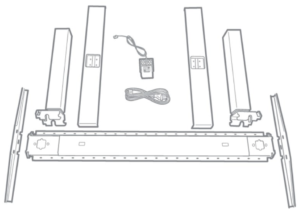
Under intense and continuous cost pressure from Chinese manufacturers, Linak had to come up with a way to make its top-quality, precision robotics-built lifting bases significantly cheaper. So it launched a stealth development program and a new factory in Thailand to develop what it now calls “Desk Frame 2” (DF2). While not the hotbed for standing desk manufacturing plants like China is, Thailand does have the distinct advantage of not being subject to onerous US tariffs imposed by the last administration, which currently adds 25% to the cost of imported components.
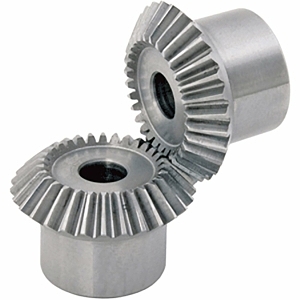 Bevel gears inside the DF2’s “beam” make it possible to move both lifting columns with a single motor.
Bevel gears inside the DF2’s “beam” make it possible to move both lifting columns with a single motor.The DF2 design is clever in reducing assembly effort and cost-of-goods at the same time. In particular, it eliminates one motor entirely—the most expensive component of a lifting base system. Instead of having one motor attach directly to the end of the spindle drive that is inside each lifting column, a single motor is enclosed in a “beam” that is pre-installed to the desktop. The motor’s controller electronics are enclosed in the beam as well, making it a neat and tidy affair.
The lifting columns simply snap into the beam, as you can see illustrated on page 18 of the Solo’s installation manual. The spindle in each leg connects to the motor via two transmission shafts inside the beam, by virtue of bevel gears. The only cords coming out are an AC power cord and a cord to the “Simple Touch” handset paddle (a simple up/down switch).
The Steelcase Solo is the first standing desk product based on the DF2 to reach the market. Because it makes desk assembly take less than 10 minutes, the Solo is also the latest entry in our round-up of Quick-Install Standing Desks. It joins a small league of next-generation standing desks like the iMovR Lander (3-minute install) and Lander Lite (8-minute install), both of which are based on the state-of-the-art Desk Frame 1 (DF1). This top-of-the-line Linak base is made in its highly automated Louisville, Kentucky plant.
There are a few trade-offs with the low-budget DF2 design, which has probably contributed to the slow take-up by other American standing desk manufacturers. Driving a full 350 lbs maximum lift load with a single motor and through two transmission shafts puts a lot of strain on that motor. One indication of this is the relatively short “duty cycle” on the system.
The duty cycle on most electric standing desks these days is 10%, meaning you (or more likely, a small child hanging out in your office) can run the desk up and down continuously for 2 minutes before the motors overheat, and then need 18 minutes to cool back down before the controller will allow you to command them again (this is to protect the motor windings from overheating, burning off their copper wire insulation and shorting out). The duty cycle rating on the DF2 used in the Solo is only 5%, or 1 minute of use followed by 19 minutes of rest.
In contrast, when we tested the iMovR Lander desk with its DF1 frame we were able to make it move up and down continuously for 5 minutes—bearing a full 360 lb load—and the motors were cooled down and ready to go again in just a matter of seconds. The DF1 has the best duty cycle of any desk we’ve ever tested since 2013. The DF2’s duty cycle is closer to that of the Jiecang base used by Fully, UpLift and others, which is after all its direct competition. While not a practical issue for most users on a day-to-day basis it is a useful way to measure how much load the motor(s) in a lifting base will have to bear and says something about the potential reliability and durability of the system.
The other trade-off of the single motor design and mesh geared drive shafts is noise. While the Lander and Lander Lite desks—both based on DF1 componentry—are among the quietest sit-stand desks on the market, the DF2 is rated at an “<55 decibel” noise rating. That’s louder than the average dishwasher. (We have yet to get the Solo into our acoustic test lab to take our own measurements, these figures are published by Linak.)
Lastly, stability. While the beam itself provides a lot of backbone strength to the desktop it is bolted into, the snap-in connection for the legs appears like it could be a significantly weaker connection than the extraordinarily strong “kick’n’click” brackets used on the DF1 system. (Also to be rigorously tested in our stability lab in the near future.)
The bottom line on this is that we’ve been reviewing standing desks since a time when the preponderance of the OEM bases available were manually cranked or a single electric motor. Crank-up desks have gone the way of crank-up windows in automobiles, and motors became so much less expensive as the industry started to ship literally millions of standing desks that eventually almost no one even made a manually-adjustable desk anymore. At least, we haven’t reviewed one in over five years.
Single-motor desks are still widely available on Amazon from Chinese manufacturers looking to sell desks under $300, and their reliability ratings are generally very poor (reflected in their very short warranties). So Linak’s decision to make a budget base to compete with the Chinese is understandable, and given the company’s legendary quality reputation, it’s probably the best single-motor lifting base that money can buy.
But it’s still a single-motor system and this empirically means that it’s not going to be as durable or reliable as a dual-motor system. While you might think that one motor means one fewer component to break, Linak’s Italian-built motors are exceptionally reliable. In-field failures are incredibly rare. But the mechanical rods and gears inside the DF2’s beam add a lot more stress points in the system that could potentially fail.

As for the handset, it is indeed cost-minimized. A simple paddle switch that only commands the desk up or down. No programmable memories. This is in stark contrast to the state-of-the-art “DPG” gesture controllers offered on Linak’s DF1 frames that have advanced features like Bluetooth-sync’d smartphone apps and a built-in “health coach,” with plenty of programmable height presets. This can all be summed up in “you get what you pay for,” and what Steelcase paid for in the base for its new Solo desk is the other end of the spectrum from what Linak is typically known for producing.
Limited Offering
Unlike the dozens of colors and dozens of sizes that Steelcase will typically offer on a standing desk through its commercial furniture dealer channel, the Solo is highly constrained.
The desktops are plain Jane HPL (high-pressure laminate), about as basic as it gets. (Learn about all the different desktop materials used on standing desks.) They are offered only in four small sizes and seven laminate colors. The bases are offered only in black and white.
That is it for options.
Excellent Height Adjustment Range
In sharp contrast to competitors like Herman Miller and Knoll, Steelcase did not make the blunder with the Solo of offering only a single-stage base with a very limited height adjustment range. The Solo’s dual-stage base has a height range of 22.6″– 48.7″, fully encompassing the ANSI/BIFMA G1-2013 Ergonomic Guidelines. At least the Solo’s height range will not leave shorter and taller users out in the cold like their direct competitors’ offerings.
The desk itself is not ANSI/BIFMA certified to the gold standard of X5.5-2014 that enterprise customers demand, likely because it’s never intended to be used outside the home. Clearly, Steelcase doesn’t want to cannibalize its dealer channel with an overly robust offering, and since most large enterprise, government and education customers require X5.5-2014 certification on any standing desk they buy, Steelcase dealers don’t have to worry about losing sales to Steelcase’s own online store when people start returning to their offices after the pandemic.
Just as a contrasting point, both the Lander and Lander Lite are ANSI/BIFMA X5.5 certified, being equally as popular with home office users as with large enterprise customers. Both also boast the industry’s tallest-reaching (55″+) top-end height adjustment ranges, by virtue of add-on 6″ height extenders. iMovR is still the only standing desk maker to offer these optional extenders for very tall users, office treadmill users and users seeking to absolutely maximize desk stability.
Is Steelcase E-Commerce Ready?
We’ve been reviewing standing desks from digitally-native brands since 2013 and didn’t have the highest expectations that the stodgy megacorporations like Steelcase and Herman Miller were going to quickly figure out what it takes to sell their products online after 80+ years of doing things the old school way.
In this case, Steelcase had an intelligent design from Linak at the ready with the DF2 base, hitting its price point target and making installation relatively easy (though why they needed to create a 25-page assembly manual is beyond us). In contrast, Herman Miller is charging $199-$299 for shipping and in-home installation, which has generally been a nightmare (see our reviews of Herman Miller’s Renew, Motia and Nevi standing desks).
But like Herman Miller, Steelcase just isn’t set up for rapid shipping. While Miller is taking up to 7 weeks to ship a very simple desk, Steelcase is taking 15 business days. Still an insanely long period of time to ship out a simple desk. These companies just don’t seem to get it. Even with their massive advertising campaigns targeting the WFH market, they just don’t understand that consumers’ expectations are set by the likes of Amazon and all their digitally-native competitors. Even a completely customized, made-to-order Lander Lite desk takes only one week to ship.
We were also very surprised to see that Steelcase hasn’t even published a warranty policy for the Solo. The generic Steelcase Limited Consumer Warranty published on the website lists all their other desk products but not the Solo. So we can only guess that they’re going to match certain other lower-budget Steelcase desk lines and Herman Miller’s e-commerce offerings’ warranty term, which is 12 years on the desktop and 5 years on the base. (We’ll update this when we get an official clarification from Steelcase.) For more information on warranties, be sure to read our primer on How to Compare Warranties on Standing Desks.
These short base warranties are disappointing when the competition from Chinese-made desks from Fully and UpLift are seven years, and American desks like iMovR’s are ten years. This again seems artificially set since commercial enterprise customers get much longer warranties on the whole desk.
Given the sparsely populated web page and lack of live chat capability or weekend/evening phone coverage, it feels like Steelcase still has its business boots on, and the Solo was rushed to market with minimal preparation.
The Bottom Line
We’re glad to see another entry in the slowly-expanding roster of quick-install desks, and there’s a lot to be said for the value of a single-motor design with a quick snap-in assembly. All things considered, though, the Steelcase Solo is an artificially constrained offering that lacks some of the very popular features you’d expect from a name-brand standing desk these days. Too few sizes and colors, a month-long ship time, lack of programmable height settings and a nondescript warranty are just a few of the things we were not enamored by in reviewing the Solo.
You can get a far superior product and overall customer experience with one of the other top-rated standing desks we’ve reviewed, and especially if limiting your consideration to made-in-America standing desks that are sold online. To be clear, this is not one of Steelcase’s American-made standing desks, but of course, they’re otherwise known for their made-in-USA Linak base components.
Our advice? Stick with the digitally-native brands of standing desk sellers. You’ll get way more product for the money, more responsive pre-sale and post-sale customer service, not to mention a vastly greater choice in size, shape, color and desktop materials.
Many standing desks and converters come with grommets for some added convenience. Check out our article on grommet holes for everything you need to know about the different ways to use them to enhance your workstation, what to look for in your grommet holes, and where to find the desks with the best ones.


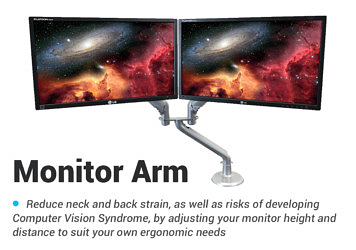
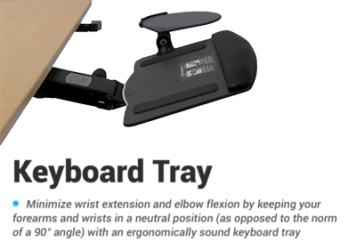
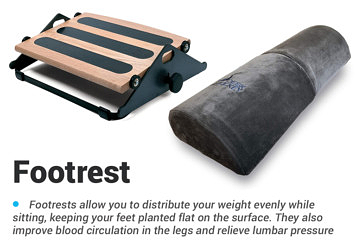
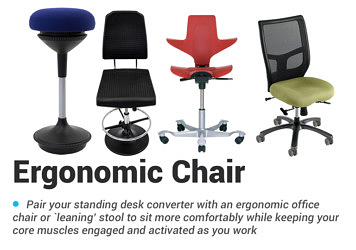
2 Comments
Leave a response >